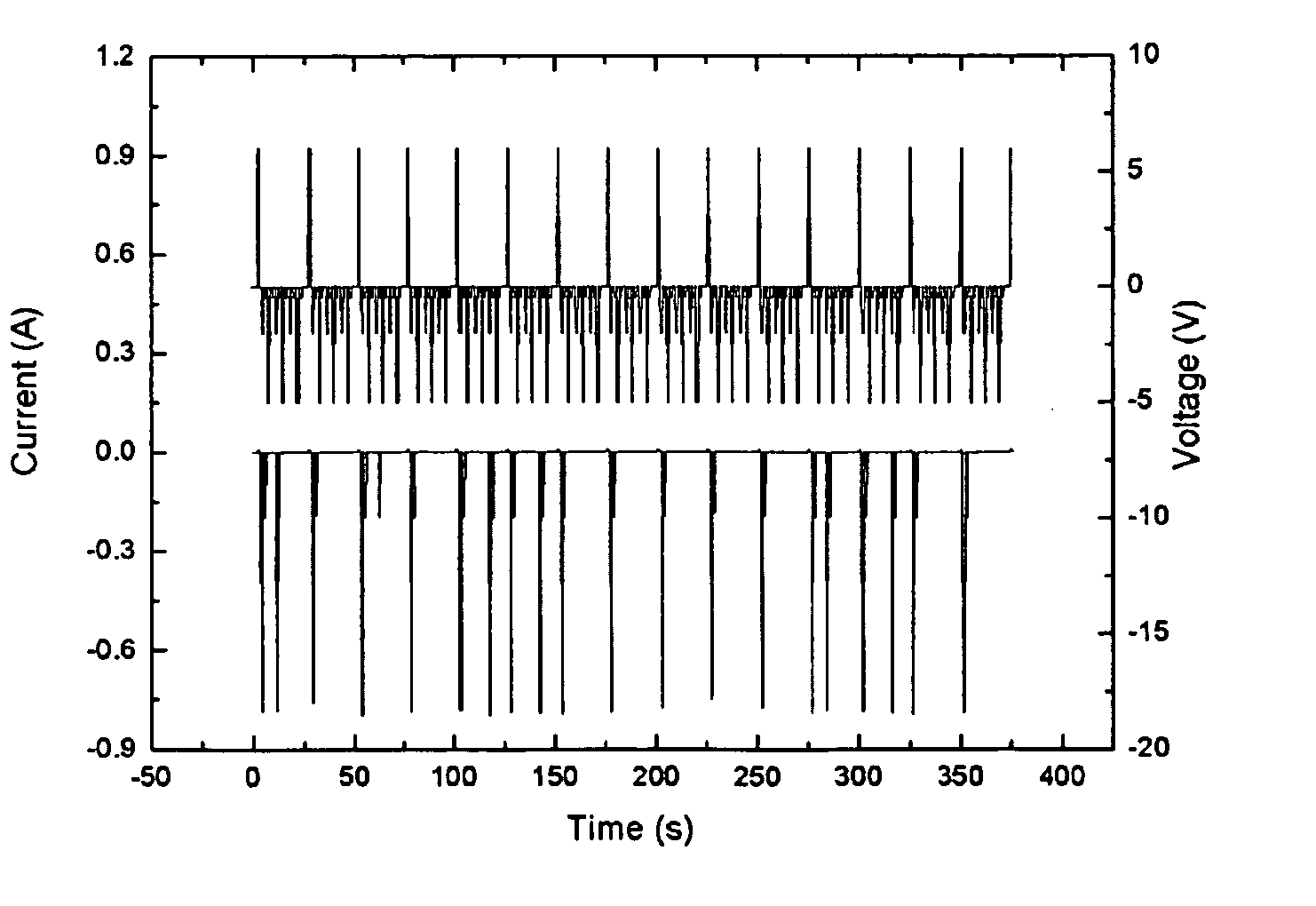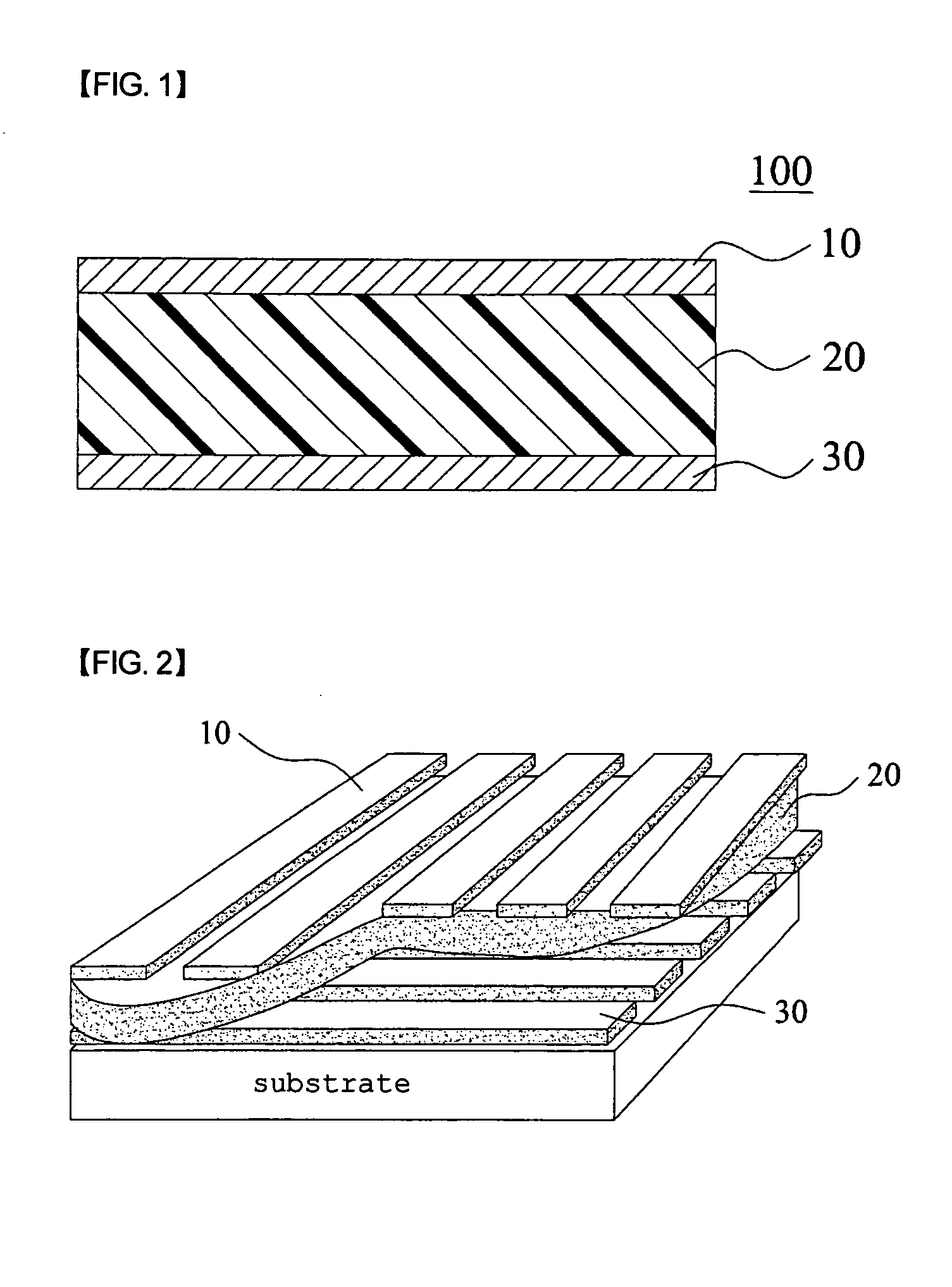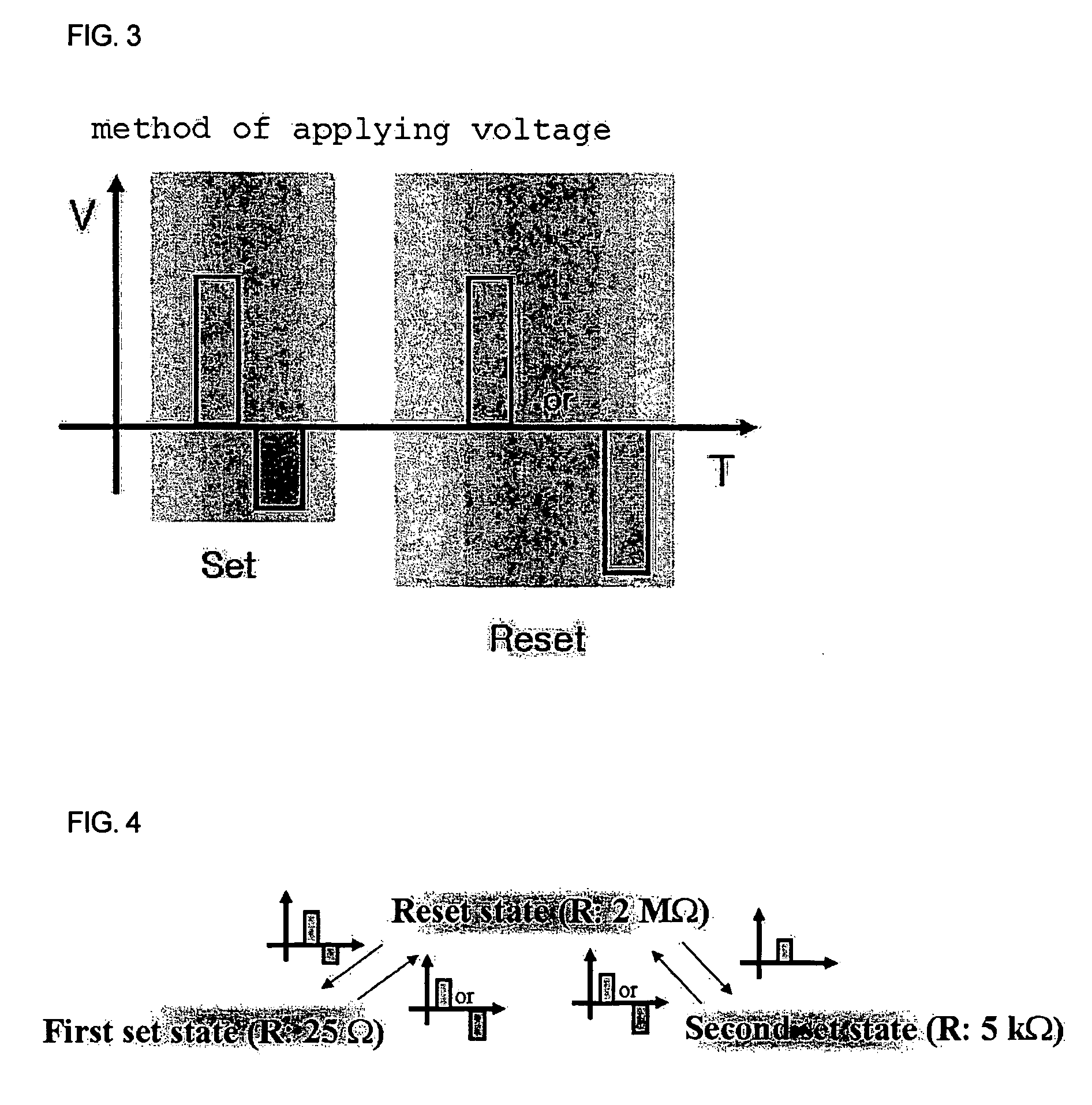Method of driving memory device to implement multiple states
a memory device and state technology, applied in semiconductor devices, digital storage, instruments, etc., can solve the problems of difficult metal nanocluster formation, difficult miniaturization of chips, and increase of memory chip fabrication costs, and achieve excellent reproducibility
- Summary
- Abstract
- Description
- Claims
- Application Information
AI Technical Summary
Benefits of technology
Problems solved by technology
Method used
Image
Examples
example 1
Fabrication of Test Memory Device
[0045] Aluminum was deposited on a glass substrate using a thermal evaporation method to form a lower electrode, and a barrier layer (Al2O3) was formed to a thickness of 1-2 nm thereon using a spontaneous oxidation method. Subsequently, the barrier layer was coated with a solution in which P3HT was dissolved through a spin coating process, and then baked at 65° C. for 10 min to form an organic memory layer. An Au electrode was deposited as an upper electrode thereon through the thermal evaporation method, thereby fabricating a test device. In this case, the thickness of the organic memory layer was 30 nm and the thickness of the electrodes was 80 nm, measured using an alpha-step profilometer. The thickness of the deposited electrode was controlled using a quartz crystal monitor.
example 2
Driving of Test Device to Implement Multiple States
[0046] Current-voltage (I-V) characteristics of a test device, which was driven according to a method of embodiments of the present invention, were measured, and the results are shown in FIG. 7a. Referring to FIG. 7a, a positive voltage pulse of 6.2 V and a negative voltage pulse of −1.7 V were continuously applied to a memory device in a reset state, thereby conducting switching into a low resistance state (a first set). This was confirmed from the observation that a current had a relatively high value when a reading voltage of 1 V was applied. Subsequently, if the negative voltage of −3 V was applied, switching into a reset state was conducted, which was confirmed from the observation that the current had a low value at the reading voltage. FIG. 7b is a graph showing switching employing a negative differential resistance effect caused by driving using a single pulse. Switching from the reset state to a second set state was achiev...
example 3
Test for Duration Time of Switching State of Memory Device
[0047] A memory device of embodiments of the present invention is nonvolatile, which means that information is capable of being stored for a long time. FIG. 8a is a graph showing a duration time in a first set state, and FIG. 8b is a graph showing a duration time in a second set state. In FIGS. 8a and 8b, voltage of 0.05 V was applied to a memory device at room temperature, and a change in the state of the memory device was detected using current. In FIG. 8a, a slight change in current was detected, which meant duration of the first set state, but attenuation was not observed during the detection. On the other hand, in the second state, slight attenuation was observed, and the magnitude of the measured current was small, thus noise occurred. From FIGS. 8a and 8b, it can be seen that it is possible to store information for a long time using the first and second set states.
PUM
 Login to View More
Login to View More Abstract
Description
Claims
Application Information
 Login to View More
Login to View More - R&D
- Intellectual Property
- Life Sciences
- Materials
- Tech Scout
- Unparalleled Data Quality
- Higher Quality Content
- 60% Fewer Hallucinations
Browse by: Latest US Patents, China's latest patents, Technical Efficacy Thesaurus, Application Domain, Technology Topic, Popular Technical Reports.
© 2025 PatSnap. All rights reserved.Legal|Privacy policy|Modern Slavery Act Transparency Statement|Sitemap|About US| Contact US: help@patsnap.com



